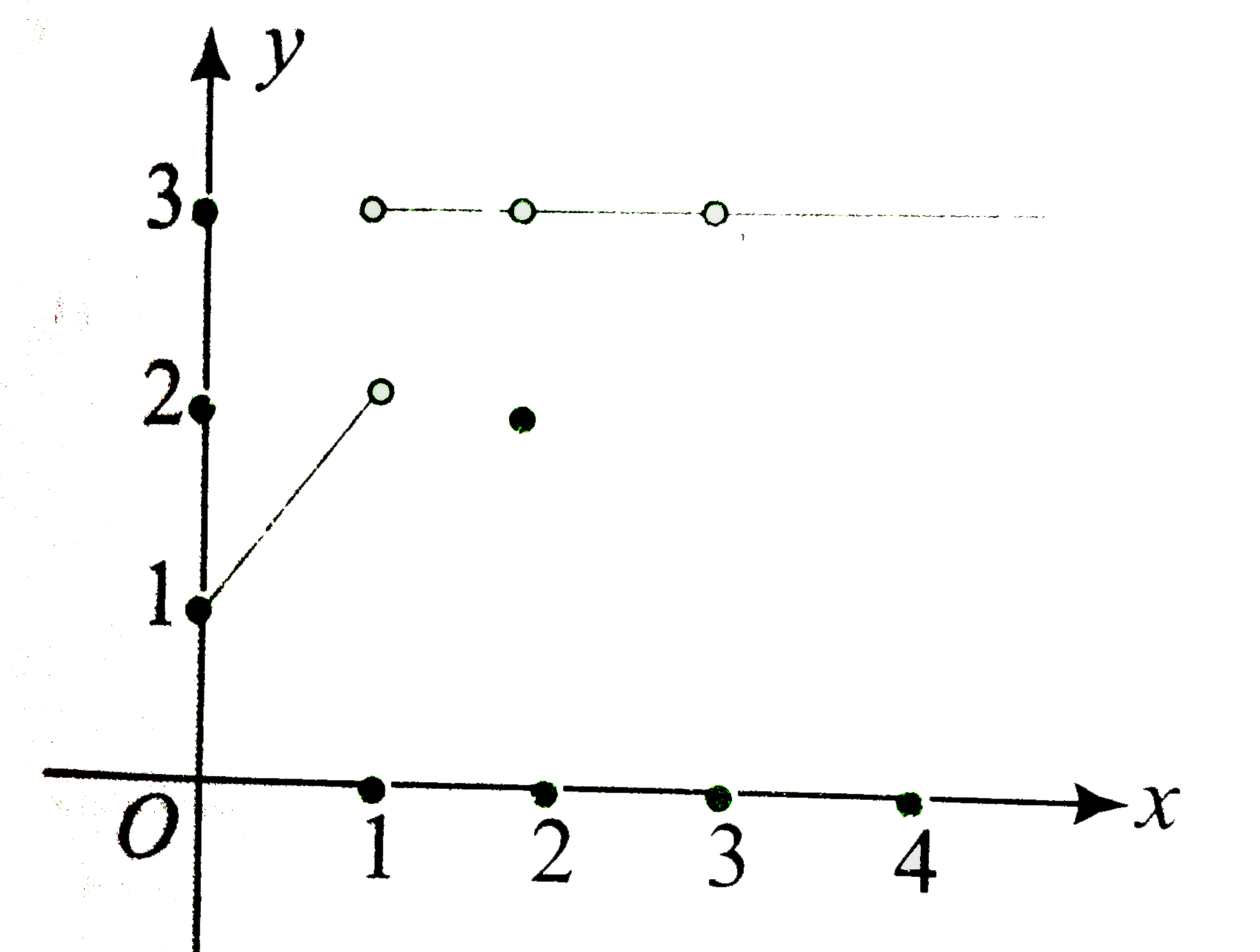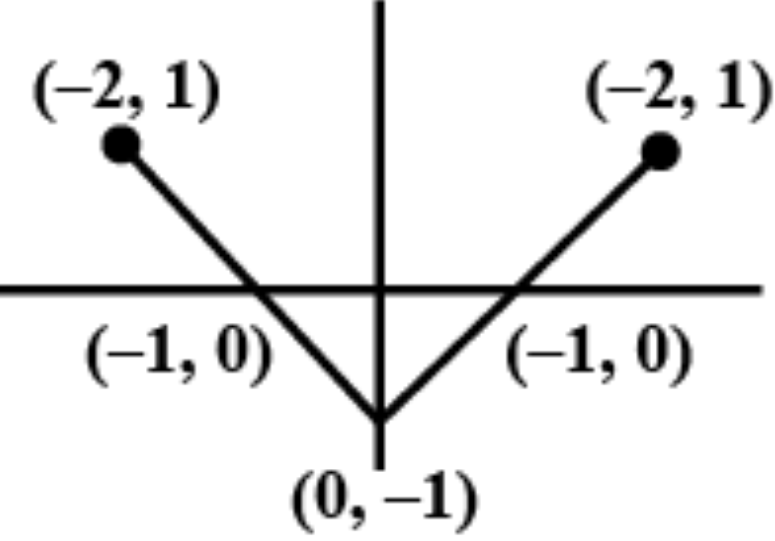consider the function f(X) =x+cosx
which of the following is not true about y =f(x)?
It is an increasing function
It is a monotonic function
It has infinite points of inflection s
None of these
The correct Answer is:4
To solve the problem, we need to analyze the function f(x)=x+cosx and determine which of the given statements about this function is not true.
Step 1: Find the first derivative of the function
To understand the behavior of the function, we first calculate its derivative:
f′(x)=ddx(x+cosx)=1−sinx
Hint: The derivative of a function gives us information about its increasing or decreasing nature.
Step 2: Analyze the first derivative
Next, we need to analyze the first derivative f′(x)=1−sinx.
- The sine function, sinx, oscillates between -1 and 1.
- Therefore, 1−sinx will oscillate between 1−1=0 and 1−(−1)=2.
This means that f′(x)≥0 for all x. Specifically, f′(x)=0 when sinx=1, which occurs at x=π2+2nπ for any integer n.
Hint: A derivative that is non-negative indicates that the function is either increasing or constant.
Step 3: Determine the monotonicity of the function
Since f′(x) is non-negative, we conclude that the function f(x) is non-decreasing.
- When f′(x)=0, the function is constant at those points, but otherwise, it is increasing.
Hint: A function that is non-decreasing is considered monotonic.
Step 4: Check for points of inflection
The points where f′(x)=0 are potential points of inflection or local maxima/minima. However, since f′(x) does not change sign (it is either 0 or positive), the function does not have any local maxima or minima, but it does have points where it is flat.
Hint: Points of inflection occur where the first derivative is zero and changes sign.
Step 5: Conclusion about the statements
Given the analysis, we can summarize the properties of the function f(x)=x+cosx:
1. The function is increasing.
2. The function is monotonic.
3. The function has infinite points where it is flat (where f′(x)=0).
Now, we need to identify which of the provided statements is not true. Based on our analysis, if all statements regarding the function's behavior are true, then the answer to the question is that none of the statements are false.
Final Answer
The answer to the question is option D: None of these.
---
To understand the behavior of the function, we first calculate its derivative:
Next, we need to analyze the first derivative f′(x)=1−sinx.
- Therefore, 1−sinx will oscillate between 1−1=0 and 1−(−1)=2.
Since f′(x) is non-negative, we conclude that the function f(x) is non-decreasing.
The points where f′(x)=0 are potential points of inflection or local maxima/minima. However, since f′(x) does not change sign (it is either 0 or positive), the function does not have any local maxima or minima, but it does have points where it is flat.
Given the analysis, we can summarize the properties of the function f(x)=x+cosx:
2. The function is monotonic.
3. The function has infinite points where it is flat (where f′(x)=0).
The answer to the question is option D: None of these.
Topper's Solved these Questions
- MONOTONICITY AND MAXIMA MINIMA OF FUNCTIONSBOOK - CENGAGE ENGLISHCHAPTER - MONOTONICITY AND MAXIMA MINIMA OF FUNCTIONSEXERCISE - Matrix Match Type
14 Videos
- MONOTONICITY AND MAXIMA MINIMA OF FUNCTIONSBOOK - CENGAGE ENGLISHCHAPTER - MONOTONICITY AND MAXIMA MINIMA OF FUNCTIONSEXERCISE - Linked comprehension Type
2 Videos
- METHODS OF DIFFERENTIATIONBOOK - CENGAGE ENGLISHCHAPTER - METHODS OF DIFFERENTIATIONEXERCISE - Single Correct Answer Type
46 Videos
- MONOTONOCITY AND NAXINA-MINIMA OF FUNCTIONSBOOK - CENGAGE ENGLISHCHAPTER - MONOTONOCITY AND NAXINA-MINIMA OF FUNCTIONSEXERCISE - Comprehension Type
6 Videos
Similar Questions
Knowledge Check
The function f(x)=sinx+cosx will be
Aan even functionBan odd functionCa constant functionDNone of these
For function f(x)=lnxx, which of the following statements are true?
View Solutionf(x)=2x+1
The function f is defined by the equation above which of the following is the graph of y=−f(x) in the xy-plane?
View Solutionconsider the function f:R→R,f(x)=x2−6x+4x2+2x+4
which of the following is not true about f(x)?
View SolutionLet a function f(x) be definded by f(x)=x−|x−1|x
which of the following is not true ?
View SolutionConsider the following graph of the function y=f(x). Which of the following is//are correct?

(a)limx→1f(x) does not exist.
(b)limx→2f(x) does not exist.
(c)limx→3f(x)=3.
(d)limx→1.99f(x)exists.
View SolutionThe graph of the function y=f(x). Then which of the following curve represent the graph of the function y=|f(x)|

View SolutionIf f:R→(0,∞)be a differentiable function f(x) satisfying
f(x+y)−f(x−y)=f(x)⋅{f(y)−f(−y)},∀x,y∈R,(f(y)≠f(−y) for all y∈R) and f'(0)=2010.
Now, answer the following questions.
Which of the following is true for f(x)
View Solution
